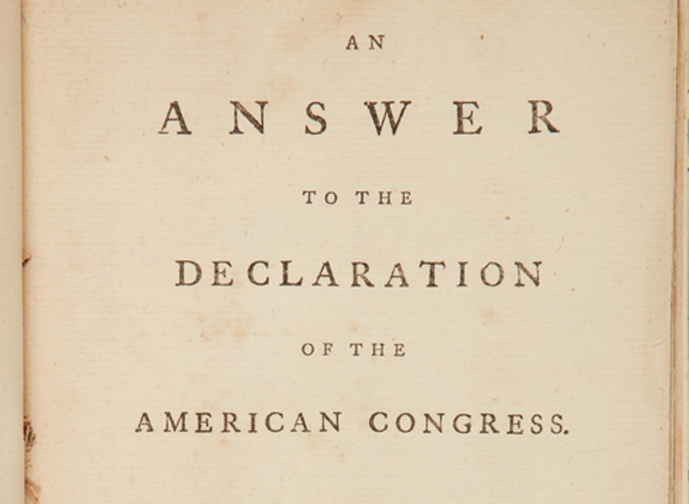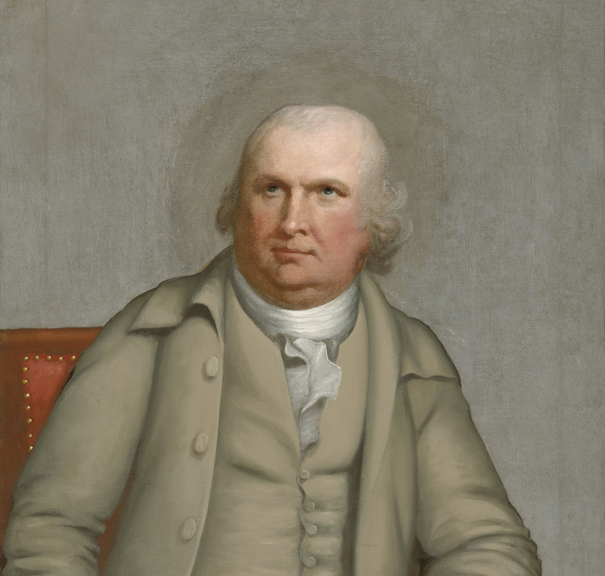The deserter advertisement presented today illustrates several important facets of the Continental Army. Looking at this list of thirteen deserters, we see:
- Men born on both sides of the Atlantic
- A variety of ages
- A soldier accompanied by his wife
- Some men with short hair
- Desertion was sometimes a very, very big problem
Deserted from the 2d Virginia Regiment in New Jersey, the following Soldiers, viz. Francis Dryshil, an Irishman, 33 Years of Age, 5 Feet 10 Inches high, short light Hair, well made, chews Tobacco, and very fond of Liquor; took off with him his regimental blue Coat, with white Binding. ‑‑‑‑‑‑ Strawther, 5 Feet 7 1/2 Inches high, red Hair, and much freckled; he lived some where about Williamsburg, served in Capt. Nicholas’s Company the Campaign at Norfolk, was discharged in August 1776, and enlisted into the same Company again. Benjamin Jones, 5 Feet 10 Inches high, dark Complexion, well set, black Beard, and Short Hair; it is imagined that he is lurking about Baltimore, as his Parents live nigh that Town. Joseph Bryant, 5 Feet 9 Inches high, fond of Liquor, and has a remarkable Scar on one of his Lips; he was enlisted in King George County, Virginia, and it is Imagined he may be taken there, as his Parents live in the said County. William Denny, an Irishman, about 30 Years of Age, 5 Feet 7 Inches high, round shouldered, light Hair, much pitted with the Smallpox, and fond of Liquor. John Saunders, an Irishman, about 18 Years of Age, 5 Feet 6 Inches high, short light Hair, and smooth faced. John Stokes, a Virginian, about 30 Years of Age, short dark Hair, round Face, and fond of Liquor. Thomas Conneran, an Irishman, 20 Years of Age, 5 Feet 5 Inches high, short black Hair. Richard Lewis, an Englishman, 35 Years of Age, 5 Feet 6 Inches high, short dark Hair, much marked with the Smallpox; he formerly lived in Loudoun County, Virginia. Thomas Trap, Serjeant, 30 Years of Age, 6 Feet high, dark Hair, slim made, pitted with the Smallpox, talks in a whining Manner; his Wife, who was heavy with Child, went off with him. Philip Ragan, Corporal, 22 Years of Age, 5 Feet 7 Inches high, brown Hair, speaks fierce, of a dark Complexion. Brice Ragan, a Private, Brother to Philip, near his Size, 20 Years of Age, fair Complexion, of an agreeable Look. Henry Mace, a Private, 5 Feet 8 Inches high, well set, fair faced, had a blue hunting Shirt when he went off; the Serjeant, Corporal, and Philip Ragan, carried off their Regimentals of Blue with white Worsted Binding; they, with Mace, were enlisted into Captain Alexander’s Company, and may be taken in Frederick County, Virginia. Eight Dollars Reward for each Man, to be paid by
Alexander Spotswood, Col. 2d Virg. Reg.
[Virginia Gazette (Dixon & Hunter), Williamsburg , September 5, 1777]
The ad is formatted in the same way that it originally appeared; printers apparently valued space more than readability. Some of the descriptive information is colorful, and suggests that discipline could be quite a challenge. In some cases there were no truly distinctive characteristics offered. In one case, the man’s first name was not known to the officer who placed the ad, even though many other details were. Although one soldier had a “black Beard,” this should not be construed to mean that the man was unshaven; beards as we known them today were not fashionable in civilian life or hygienic in the military, so soldiers were almost invariably clean shaven, but the color of a man’s “shadow” was often described in advertisements if it was a distinguishing feature.
Clothing is described for only a few of the men, those who had “regimentals” or some approximation thereof. Regimentals meant the regimental uniform, typically a long coat with lapels and cuffs that buttoned back, knee-breeches and a waistcoat; the “binding” was around the button holes on the coat lapels. Presumably the other men wore civilian clothing that was not interesting enough to describe, or their dress was not known.
This seems like a lot of deserters for one regiment at one time, but there are many ads featuring more deserters than this one, and regiments that lost far more men over a short period than the 2nd Virginia Regiment did in September of 1777.
If you love deserter advertisements, a published two-volume collection of them may be of interest to you. “He Loves a Good Deal of Rum”: Military Desertions During the American Revolution, 1775-1783. Volume 1, 1775 – June 30,1777; Volume 2, June 30, 1777-1783 by Joseph Lee Boyle (Baltimore, MD: Clearfield, 2009) contains most of the deserter ad published in American newspapers during the war, providing fascinating insight on the variety of people who comprised the armies of the era.










One thought on “Deserter a Day 2 (of 5)”
I have been enjoying each day of the deserter files but they are leaving me with even more questions. What do they mean by “short hair?” What do they mean by “beard?” It is easy to think they are using these terms the same as we do but are they?
What were the numbers of British deserters compared to American? I would think the incentive to run would be higher for Americans because they were close to home but did British soldiers desert when they were back in England?
So glad that JAR decided to publish this series. Great stuff.